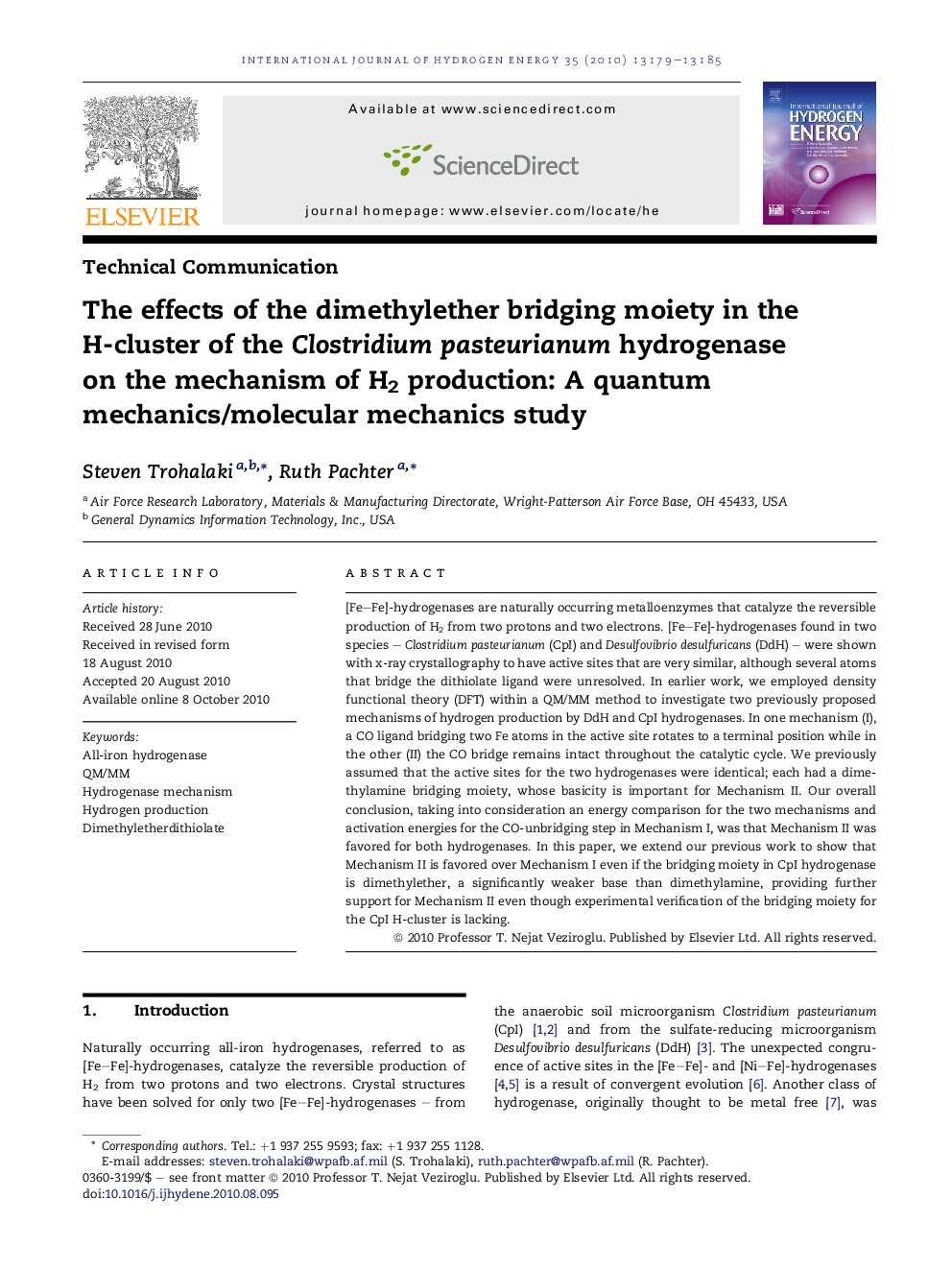| Article ID | Journal | Published Year | Pages | File Type |
|---|---|---|---|---|
| 1282677 | International Journal of Hydrogen Energy | 2010 | 7 Pages |
Abstract
[Fe-Fe]-hydrogenases are naturally occurring metalloenzymes that catalyze the reversible production of H2 from two protons and two electrons. [Fe-Fe]-hydrogenases found in two species - Clostridium pasteurianum (CpI) and Desulfovibrio desulfuricans (DdH) - were shown with x-ray crystallography to have active sites that are very similar, although several atoms that bridge the dithiolate ligand were unresolved. In earlier work, we employed density functional theory (DFT) within a QM/MM method to investigate two previously proposed mechanisms of hydrogen production by DdH and CpI hydrogenases. In one mechanism (I), a CO ligand bridging two Fe atoms in the active site rotates to a terminal position while in the other (II) the CO bridge remains intact throughout the catalytic cycle. We previously assumed that the active sites for the two hydrogenases were identical; each had a dimethylamine bridging moiety, whose basicity is important for Mechanism II. Our overall conclusion, taking into consideration an energy comparison for the two mechanisms and activation energies for the CO-unbridging step in Mechanism I, was that Mechanism II was favored for both hydrogenases. In this paper, we extend our previous work to show that Mechanism II is favored over Mechanism I even if the bridging moiety in CpI hydrogenase is dimethylether, a significantly weaker base than dimethylamine, providing further support for Mechanism II even though experimental verification of the bridging moiety for the CpI H-cluster is lacking.
Keywords
Related Topics
Physical Sciences and Engineering
Chemistry
Electrochemistry
Authors
Steven Trohalaki, Ruth Pachter,
